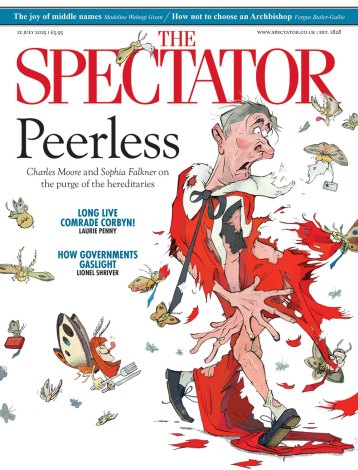Someone needs to write a history of vibrato. Clearly this should be Roger Norrington: to judge from his words on Radio Three recently he has given the topic much thought and come up with some historically-based conclusions. I suspect he isn’t going to do it, though, because, like me, he is too busy chiselling out a new -ism on the back of his research, by which he hopes to effect yet another revolution in performance practice.
But the bare bones of the story are straightforward enough. Vibrato, both in orchestral playing and in singing, became acceptable in classical music-making no earlier than 1920. It had existed before this in more vulgar circumstances, but was resisted at the most serious level as being a cheap trick. Part of the written history I am proposing would examine just how something that was once derided could so rapidly become all the rage. There must be many modern parallels here: in styles of clothing, in habits of speech, in modes of eating. One year no one would be seen dead wearing those clothes or speaking like that or resorting to fast food; the next year it is not only acceptable but also perfectly normal, yet another aspect of contemporary living. So it seems to have been with vibrato. One year the music-hall; the next year (or so) the symphony hall and the opera house.
Much of the rationale behind the drive for authenticity in performing repertoires of the past has had to do with stripping away sounds which later generations had come to accept as being normal, but which were not available to the composers themselves. There were varying degrees of difficulty in accepting the results. In my chosen patch — Renaissance choral music — the improvement was obvious to anybody with any sensitivity, and had a lot to do with limiting the use of vibrato. In the case of Mozart’s piano concertos, the use of the instruments which Mozart knew — fortepianos, which have less resonance than their modern descendants — has never really caught on since they sound so tinny.
However, Norrington is proposing something slightly different. He wants to perform Brahms on modern instruments, but with the strings playing straight. He says that other instruments, like the oboe or the brass in German orchestras, never use vibrato, yet people feel short-changed if the strings do not. The result, as shown in his new recordings with the Stuttgart Radio Symphony Orchestra, is bracing, like going back to drinking tea without sugar after years of indulgence; and there is something in me which rebels at the relentless assumption that such abstinence is desirable. Like the fortepiano, a completely vibratoless string sound is terribly disappointing.
Anyway, the oboe does play with some vibrato — not as much as the strings usually do, but some; the brass in both English and Russian orchestras play with vibrato to thrilling effect; and my singers sing with a little vibrato. The first rule in my performing world is that no vibrato is ‘white’ and boring: the issue which we confront every time we go on stage is how much vibrato to use in order to make an interpretation engaging, while preserving good tuning.
The vibrato curve reached its height in the Fifties and long since started to decline again. Initially, the fad for it scooped up every type of musician, though none more extremely than opera singers, who nowadays can expect to be laughed at if they warble excessively. However, with my Renaissance performing hat on I say: by all means give us Brahms as Brahms would have known, but also allow that what we have discovered since about expressing emotion in sound may be an advance.





Comments